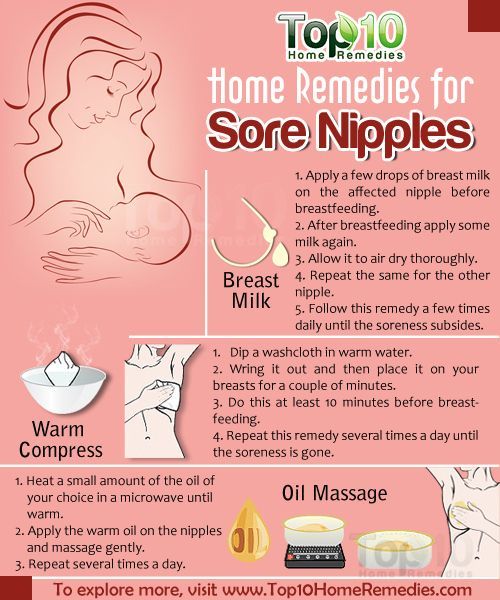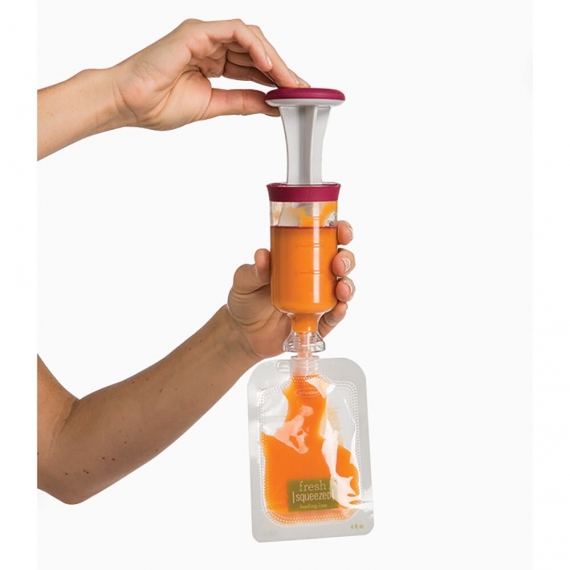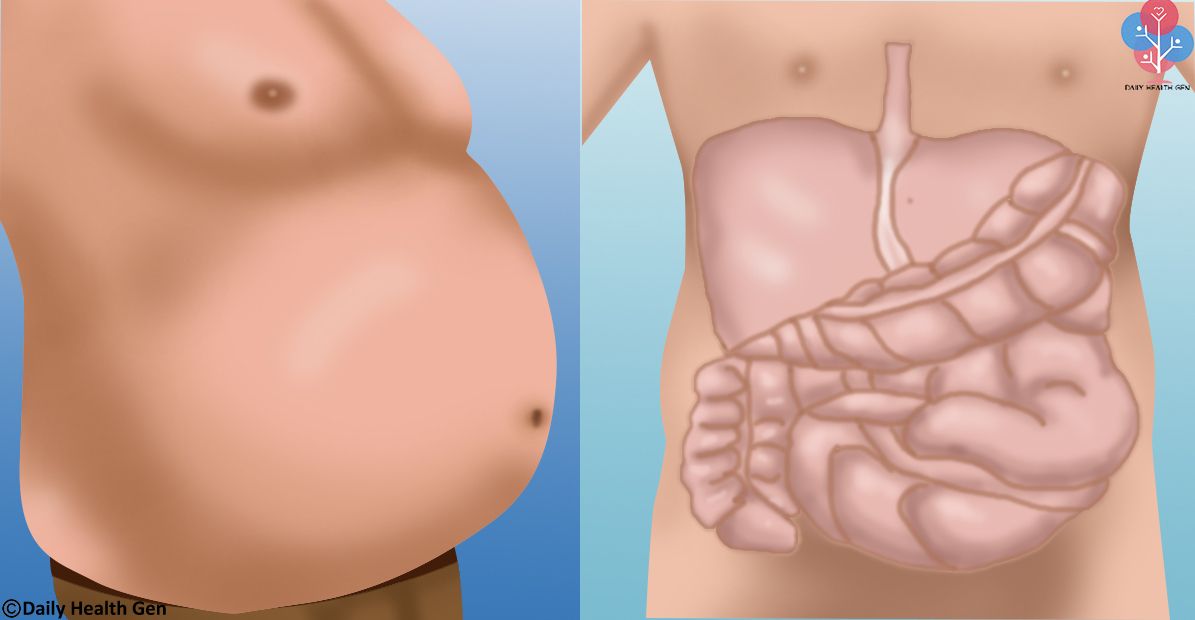Best veggies for baby food
Best Vegetables for Babies
We all want our kids to grow up eating a healthy diet — and it’s hard to think of a healthier food than vegetables. Full of complex carbs, fiber, vitamins, minerals, and antioxidants, veggies are a dietary building block of wellness, even for very young children.
But the question always follows: Can you actually get your kid to like vegetables? The battle over a plate of veggies is a classic parent-child power struggle.
Here’s how to not only choose the best veggies for your baby, but prepare them in ways that will help your kiddo become a veggie lover for life.
For babies just starting to eat solids (around 6 months or so), try these six softer, blendable veggies.
Carrots
Bugs Bunny’s fave orange veggies are a baby food staple for good reason. Once cooked, carrots puree beautifully and offer a not-too-piquant flavor for baby’s sensitive palate.
Plus, they contain plenty of fiber to promote healthy digestion, as well as beta carotene, which converts to vitamin A to boost vision and immune function.
Spinach
Speaking of cartoon characters’ favorite vegetables, remember Popeye’s love for spinach? This leafy green deserves its cartoon reputation for being rich in iron — a nutrient babies especially need for energy and development.
Cooked, pureed spinach is best for younger infants. Add a sprinkle of salt to enhance taste.
Pumpkin
Pumpkin may bring to mind chilly temperatures and falling leaves, but with canned varieties, your child can enjoy the gourds any time of year. Pureed pumpkin’s smooth texture is ideal as one of baby’s first foods, and high amounts of A and C round out its nutrient profile.
Avocados
Avocados are the heroes of healthy monounsaturated fats. These important macronutrients help develop baby’s brain and nervous system, as well as increase absorption of fat-soluble vitamins A, D, E, and K. Meanwhile, each serving of avocado comes with a sizable dose of fiber and folate.
Keep in mind that a little bit of high fat avocado goes a long way. Start with a serving of about 1 tablespoon, mashed.
Start with a serving of about 1 tablespoon, mashed.
Sweet potatoes
Mashed cooked sweet potatoes not only make for easy-peasy serving to your little one, they’re loaded with nutrients, too! Like carrots and pumpkin, sweet potatoes burst with immune- and vision-supporting vitamin A, plus plenty of fiber, manganese, vitamin B6, and vitamin C.
When serving sweet potato to your baby, be sure to mash well and remove the skin.
Peas
Mushy peas might not sound like a culinary delight to adults, but they’re an excellent choice for infants. These little green balls are one of the highest-protein veggies, with 4 grams per serving.
To serve, simply steam frozen peas and blend until pureed. You can even add a bit of breast milk for a thinner consistency.
As your baby becomes more of a solid food pro, try introducing these six veggies.
Broccoli
With cancer-fighting compounds and micronutrients galore, broccoli is an extremely healthy veggie for people of all ages.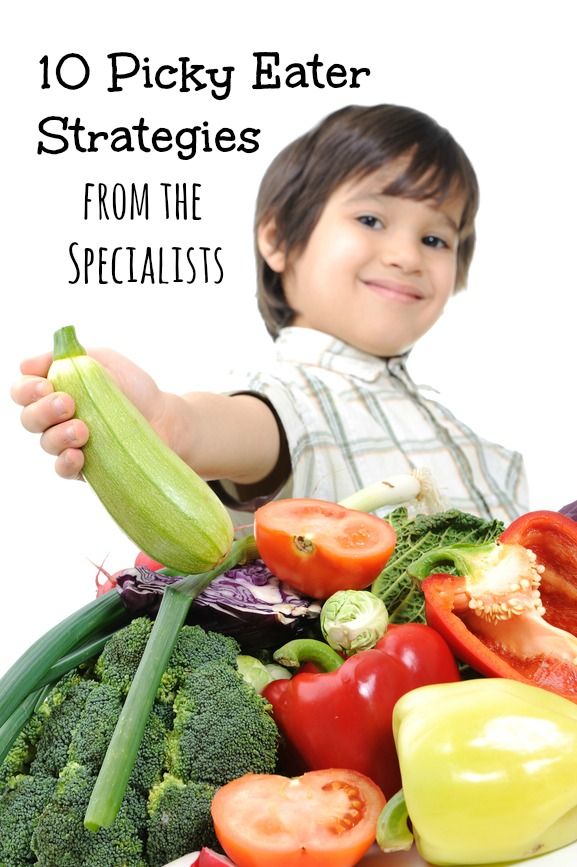
Turn your baby on to this cruciferous superfood by serving steamed or roasted broccoli by itself, or add it to pasta dishes, cheesy baked potatoes, or soups cooled to room temperature.
Cauliflower
Has your little eater cut a few teeth? Now’s the time to try cooked cauliflower! The chunky texture of this veggie in a puree (or roasted and roughly mashed) offers just the right level of challenge for new chewers.
Zucchini
When the summer months roll around, take advantage of a bumper crop of zucchini by feeding some to baby. Green and yellow summer squash offer mild flavor and nutrients like manganese, potassium, and vitamin A.
Try serving your baby zucchini prepared as cooked, spiralized “zoodles” with a tomato sauce or thin-sliced and pan-sautéed with a bit of olive oil.
Tomatoes
Before long, your kiddo will likely be chowing down on all sorts of tomato-based foods like pizza and spaghetti with marinara. For now, get them started on the fresh, whole version by serving tomatoes in finely chopped pieces.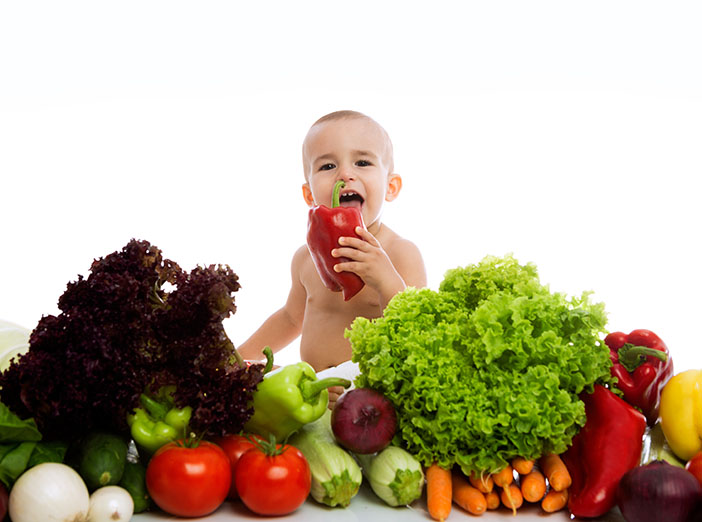
Ample water content for hydration plus vitamins C and A add to tomatoes’ value as a healthy first veggie.
Onions
Because of their pungency, you might shy away from feeding your child onions. But these aromatic alliums can be a great way to add flavor to baby’s diet without sodium or anything artificial. Try cooked onions in casseroles or mixed in with other vegetables.
Beets
We’ll be honest: Beets are an acquired taste. That said, you can make them more tempting for baby by pureeing cooked beets with fruits like blueberries or cherries.
The pigments in these colorful blends might leave baby with a red beet “mustache,” but beets’ high content of folate, manganese, and fiber are well worth it.
You can help your child take the lead in the weaning process by providing them plenty of self-feeding opportunities. Incorporate these four bite-sized, easily grasped veggies in baby-led weaning (BLW).
Butternut squash
When first starting with baby-led weaning, opt for softer foods.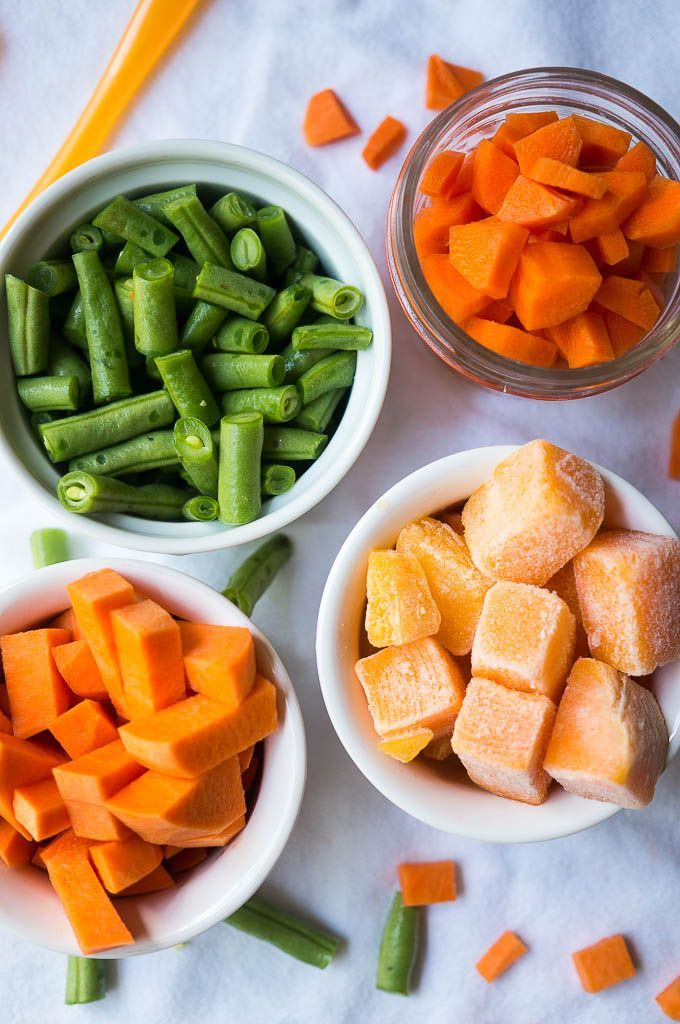 They’re easier for baby to gnaw, which may allay your concerns about choking. (Still, carefully supervise your baby during mealtimes.)
They’re easier for baby to gnaw, which may allay your concerns about choking. (Still, carefully supervise your baby during mealtimes.)
With their tender texture and sweet taste, pieces of cooked butternut squash are an excellent first round of BLW. Dust cooked pieces with cinnamon for even more flavor.
Bell peppers
Fun fact: Ounce for ounce, bell peppers contain more vitamin C than oranges! This important vitamin not only strengthens the immune system, it acts as an anti-inflammatory antioxidant.
Give baby’s health a leg up by letting them self-feed diced bell peppers. If the peppers’ strong flavor gets a negative reaction, try serving them with cheese or hummus.
Cucumbers
There’s nothing quite so refreshing as a cool, crunchy cucumber. These veggies’ cooling sensation can be especially soothing for babies’ teething gums. To reduce the risk of choking, peel the skin off of cucumbers and dice them into small pieces as part of baby-led weaning.
Edamame
Everyone knows that popping edamame beans out of their shells is half the fun of eating these tender legumes.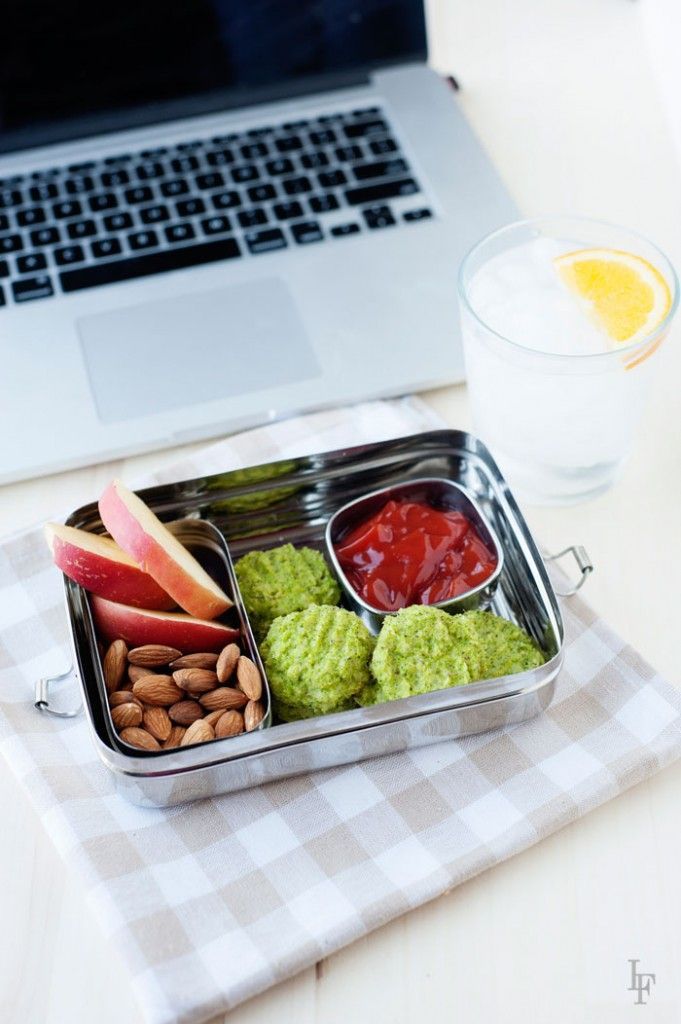 However, for baby-led weaning, start by placing shelled, slightly mashed edamame on the high chair tray. Their high protein content will fuel baby’s playtime, as well as build muscle tissue.
However, for baby-led weaning, start by placing shelled, slightly mashed edamame on the high chair tray. Their high protein content will fuel baby’s playtime, as well as build muscle tissue.
Vegetables are among the healthiest foods on the planet. Could anything go wrong with feeding them to your baby?
For very young children, there are some safety concerns about nitrates — compounds certain vegetables absorb from soil.
When babies consume excessive amounts of nitrates, it can lead to a condition called methemoglobinemia. Babies with this condition may develop a blue tinge on their hands, feet, and mouth, and may have fatigue and difficulty breathing.
If your baby has any of these symptoms — especially shortness of breath — seek medical attention immediately.
Root vegetables like beets and carrots and leafy greens (especially spinach) do contain relatively high levels of nitrates. But this doesn’t mean you shouldn’t feed these healthy veggies to your baby when they start solids.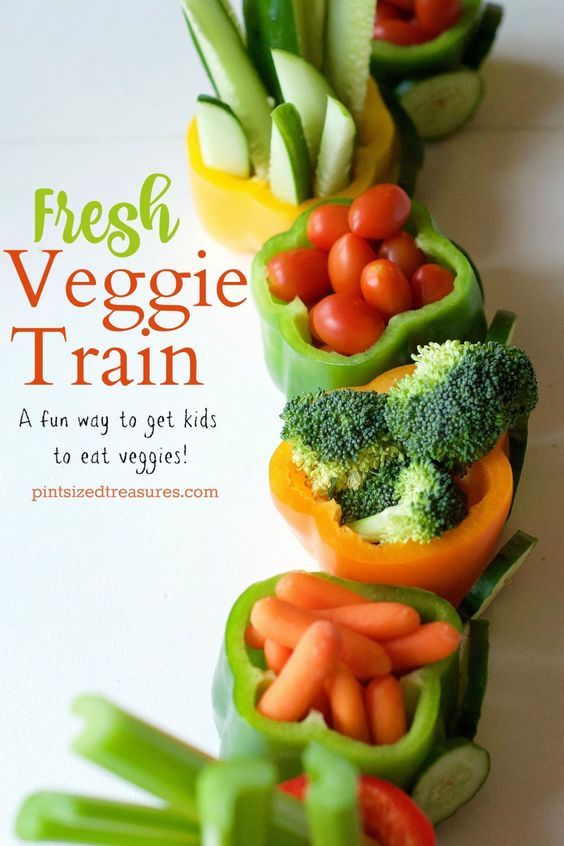
Older research from 2005 shows that high amounts of nitrates from vegetables are primarily harmful to babies 3 months of age and younger — but since it’s not recommended to introduce solid foods until around 6 months, this is likely to be a nonissue.
- Baby carrots. “Baby” may be in their name, but baby carrots are not a good choice for infants. Their size and hardness make them a choking hazard.
- Raw celery. The stringy fibers of raw celery can easily lodge in a baby’s throat. If you choose to serve your baby celery, be sure it’s cooked thoroughly and cut into small pieces.
- Corn. Creamed or pureed corn is fine for infants, but avoid serving the small, chewy kernels by themselves.
- Any hard, raw vegetables. According to the American Academy of Pediatrics, chunks of raw vegetables remain a choking hazard until children reach the age of 4 years.
As with any food group, you may run into snags when introducing your child to the wide and colorful world of veggies. Although allergies to vegetables are rare and no vegetable is among the top eight food allergens, it’s always possible for a child to have an allergic reaction to any food.
Although allergies to vegetables are rare and no vegetable is among the top eight food allergens, it’s always possible for a child to have an allergic reaction to any food.
If your baby has symptoms like vomiting, diarrhea, wheezing, hives, or a rash after eating a particular vegetable, talk to your pediatrician about the possibility of an allergy or food sensitivity.
Contrary to the stereotypes, getting your kid to eat their vegetables doesn’t have to be an epic battle of the wills. By introducing a wide variety of veggies and preparations from a young age, you’ll give your little one the best chance of developing a veggie-loving palate.
Even if your high chair gourmand spurns spinach or turns up a nose at turnips, don’t despair! Keep at it. The more you expose your child to any food, the more likely they are to eventually accept (and even enjoy) it.
The 10 Best Vegetables For Babies 6-12 Months Old
Want your little one to turn into a full fledged veggie lover down the road? Save this list of the 10 best vegetables for babies 6 to 12 months old when you need some plant-based inspiration for your little one.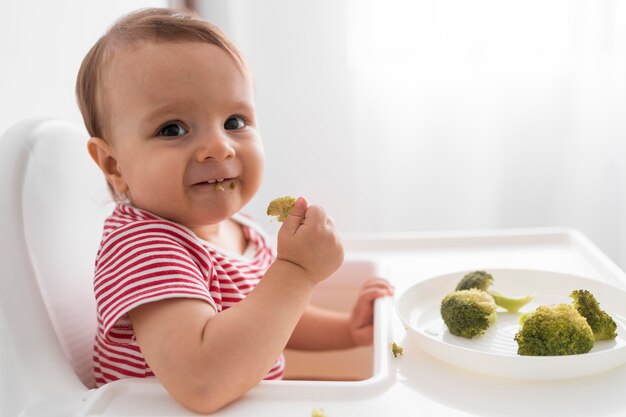
While future picky eating is not entirely preventable—there’s a genetic component involved!—there are some strategies you can use early on as you introduce your baby to solids that help get them familiar with and remain open to a wide variety of foods. And introducing baby to vegetables early on is one of those things!
But, it’s okay if you didn’t start them on veggies right when they started solids– you didn’t miss your chance. Any time you start incorporating more veggies is a good time!
Today’s post is all about the 10 best vegetables for babies under 12 months. It covers when to introduce these foods, why they’re so great nutritionally, how to incorporate them into baby’s days, and why it’s such a great idea to include vegetables among your baby’s first foods!
Introducing Babies to Vegetables
Many veggies can be introduced right off the bat—as soon as your baby is ready for solids. The American Academy of Pediatrics recommends waiting to introduce solid foods (which includes finger foods and purees) until your baby is between four and six months old.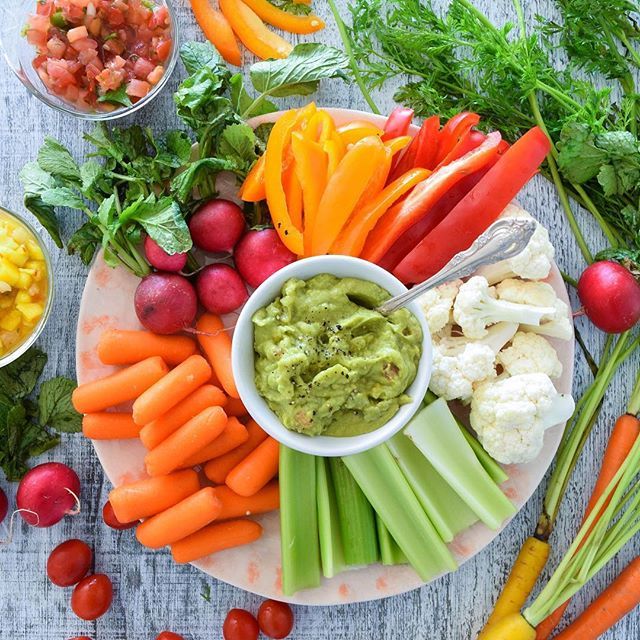 But I’d say it’s ideal to wait until they’re closer to six months of age because by then, they will have developed head and neck control and the ability to sit stably in their high chair. You don’t want to start solids too early—before they’re physically ready to eat more foods. And, breastmilk and/or formula can provide baby with everything they need nutritionally up until the 6 month mark, so solids are typically not needed sooner.
But I’d say it’s ideal to wait until they’re closer to six months of age because by then, they will have developed head and neck control and the ability to sit stably in their high chair. You don’t want to start solids too early—before they’re physically ready to eat more foods. And, breastmilk and/or formula can provide baby with everything they need nutritionally up until the 6 month mark, so solids are typically not needed sooner.
Generally speaking, your baby is ready to start solids if they:
- Can sit upright
- Can sit unsupported
- Have good head and neck control
- Have some practice bringing toys or objects from their hand to their mouth
- Show an interest in food
If you can begin introducing your baby to veggies around 6 months of age, I highly recommend you do! Because doing so lets them get acquainted with a greater variety of tastes and textures early on, and this helps combat picky eating down the line!
Related: The Ultimate Guide to Baby’s First Foods from 4-6 Months Old
Eat The Rainbow
I’m here to remind you that vegetables aren’t just green! They are one of the most diverse, colorful, and tasty food groups, and there are so many options that are great for your baby.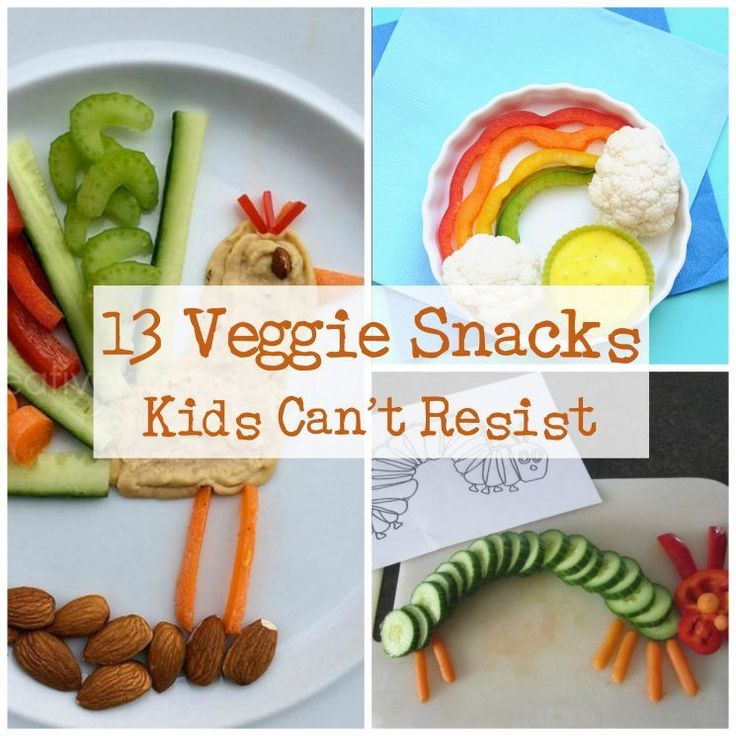
As a pediatric dietitian, my list of the top ten best vegetables for babies is:
- Broccoli
- Peas
- Sweet Potatoes
- Asparagus
- Carrots
- Oyster Mushrooms
- Artichokes
- Brussels Sprouts
- Acorn Squash
- Beets
(See how there are so many different colors represented here? That’s so great for nutritional, textural, and taste variety!)
There’s a LOT more info on why I love each veggie so much below—plus safe ways to serve them, and baby-friendly, veggie-packed meal ideas! So be sure to keep on reading.
Let’s Talk Phytonutrients
Before we start, I want to mention a group of plant compounds called phytonutrients. Because vegetables are not just made up of carbohydrates, fiber, and a little bit of protein or fat. They also contain these complex and multi-dimensional little health warriors that support so many important body processes.
Phytonutrients (also called phytochemicals) are important and highly beneficial compounds found in the plants we eat. They are non-nutritive—meaning they don’t carry calories or actual nutritional components—but they serve a variety of purposes.
They are non-nutritive—meaning they don’t carry calories or actual nutritional components—but they serve a variety of purposes.
A common phytonutrient you’ve probably heard of is beta-carotene. Beta-carotene is in the carotenoid family of phytonutrients and is found in all orange, yellow, red vegetables. It’s what gives those vegetables their colors! Beta-carotene is a compound that our bodies convert to vitamin A, which is an important vitamin for vision health. And, it’s one of many phytonutrients found in vegetables, which all contribute to processes in the body in different ways.
Other phytonutrients you may have heard of include:
- Lycopene: Found in red and pink fruits and veggies
- Lutein and Zeaxanthin: Found in green veg like spinach and kale
- Glucosinolates: Found in cruciferous veggies like broccoli and Brussels sprouts
Some act as antioxidants, some support cell health, and some support cardiovascular function.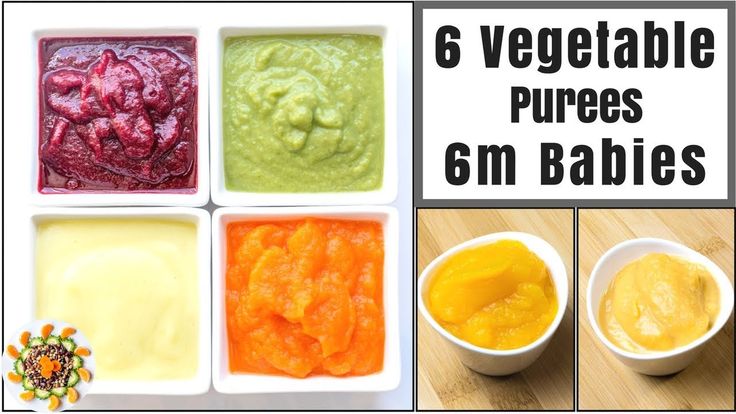 But they are ALL great reasons to get your baby familiar with these superfoods!
But they are ALL great reasons to get your baby familiar with these superfoods!
The 10 Best Vegetables for Babies
Okay, you know when and why you want to introduce veggies. Now, let’s break down ten of the best vegetables for your baby. We’ll touch on safe preparation methods (many vegetables in their raw form are choking hazards for babies, so we need to soften ‘em up!), share nutrition information for each vegetable, and give you some helpful serving ideas and food combinations to incorporate these nutritional powerhouses into your baby’s diet.
#1 Broccoli
Broccoli is a great vegetable choice for babies. It’s loaded with immune-boosting vitamins C and K, which are important for bone health and wound healing. Broccoli is also a good source of:
- Vitamin A
- Vitamin B6
- Folate (vitamin B12)
- Iron
- Zinc
Safe Broccoli Preparation for Baby
Hard, raw broccoli can be a choking hazard for a baby. I always opt for cooked broccoli instead, because it’s safe to offer to babies who are ready for solid foods. Be sure to steam until soft—it should be able to be mashed between your fingers. You can also remove the stalk and just serve the florets if the consistency of the stalk concerns you.
I always opt for cooked broccoli instead, because it’s safe to offer to babies who are ready for solid foods. Be sure to steam until soft—it should be able to be mashed between your fingers. You can also remove the stalk and just serve the florets if the consistency of the stalk concerns you.
Quick tip – steam roasting is one of my favorite easy ways to soften veggies like broccoli for baby. This is very handy when you already are turning the oven on to cook something else! Drizzle the chopped florets with some olive oil or avocado oil and then wrap tightly in foil, making it like a little packet. Cook until nice and soft!
Of course, you can always go ahead and purée any vegetable if you’re not ready to serve it in pieces.
Baby-Friendly Meals With Broccoli
Broccoli is an easy one to serve on its own since it’s great finger food, but you can also:
- Drizzle it with olive oil or lemon juice for flavor
- Serve in it one-pot dishes like curries
- Add it to meals like omelets
#2 Peas
Peas are a great source of fiber and have a surprisingly high protein content for a vegetable! They also contain alpha-linolenic acid which is an omega-3 essential fatty acid—something we all need to get from our diets because our bodies don’t naturally produce it. It also has a good dose of:
It also has a good dose of:
- Vitamin A,
- B Vitamins (especially B6 and folate or B12)
- Vitamin C
- Vitamin K
- Iron (although not a ton!)
- Zinc
Safe Pea Preparation for Baby
Single peas may be harder for your baby to pick up until closer to nine months of age when they’ve developed the pincer grasp. Before that, it’s best to serve them mashed.
Baby-Friendly Meals With Peas
You can cook peas and serve them mashed then mix them into all kinds of things!
- Mix mashed peas with yogurt
- Serve mashed peas with butter
- Combined mashed peas and potatoes
- Serve mashed peas in soups and stews*
*Just be sure to keep an eye on your baby’s sodium intake!
#3 Sweet Potato (All Kinds)
Sweet potatoes are a strong candidate to be one of baby’s first foods! They’re rich in fiber and vitamin B6, and the different color varieties have different phytonutrients.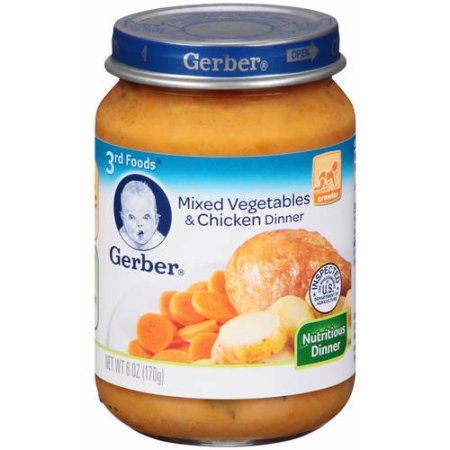 Orange sweet potatoes have beta-carotene (think vitamin A) and Japanese purple sweet potatoes have anthocyanins, which act as antioxidants in the body.
Orange sweet potatoes have beta-carotene (think vitamin A) and Japanese purple sweet potatoes have anthocyanins, which act as antioxidants in the body.
Safe Sweet Potato Preparation for Baby
Sweet potatoes need to be softened and either cut into wedges baby can hold onto (baby-led weaning style) or mashed.
Baby-Friendly Meals With Sweet Potatoes
There are so many ways to serve sweet potatoes to babies!
- Cut them into wedges and bake with olive oil and seasonings until soft.
- Bake them whole in the oven and serve them mashed.
- Make mashed sweet potatoes and mix in breast milk, yogurt, butter, or olive oil to up the fat content and make the texture easier for your baby to eat!
#4 Asparagus
Asparagus is a great source of plant-based iron for babies. Iron is an important nutrient to include in your baby’s diet because they run out of the iron stores they build up in utero at around six months of age—right around the time they start to eat solids! Plant-based sources of iron are a little harder to come by than animal sources, but are valuable ways to increase baby’s iron intake.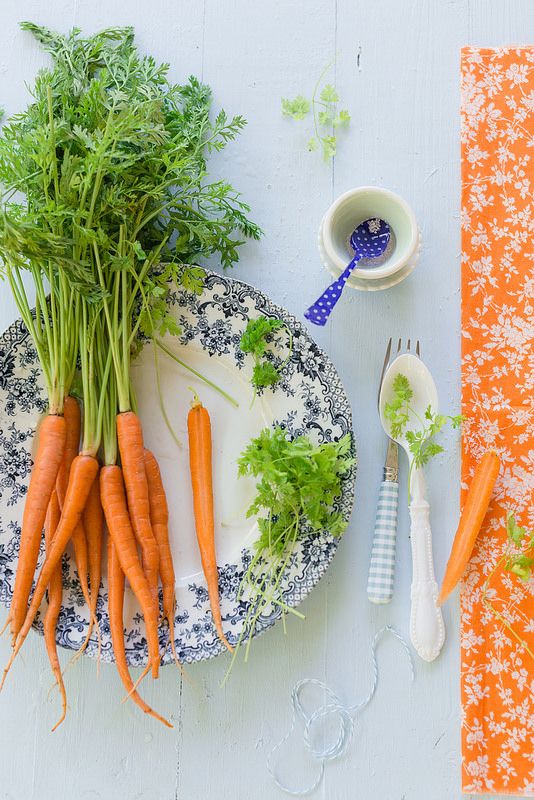 Asparagus is also a great source of B vitamins (B6 and B12, or folate) and fiber.
Asparagus is also a great source of B vitamins (B6 and B12, or folate) and fiber.
Safe Asparagus Preparation for Baby
For young eaters, asparagus needs to be steamed in whole stalks and offered when soft.
Baby-Friendly Meals With Asparagus
- Serve whole stalks steamed with butter or seasonings.
- Add cooked asparagus to foods like omelets.
#5 Carrots
Carrots are definitely on the list of choking hazards for babies—especially baby carrots, because of their shape, size, and firmness. But, when prepared safely, they’re a great veggie choice for babies. Carrots are loaded with vitamin B6, fiber, and beta-carotene which our bodies use to create vitamin A.
Safe Carrot Preparation for Baby
Carrots can be steamed until soft and presented to baby in long, spear-like halves the width of two adult fingers. They can also be mashed! Remember, just like all other veggies, the carrot should be able to be smashed between your fingers for your baby to be able to safely handle it.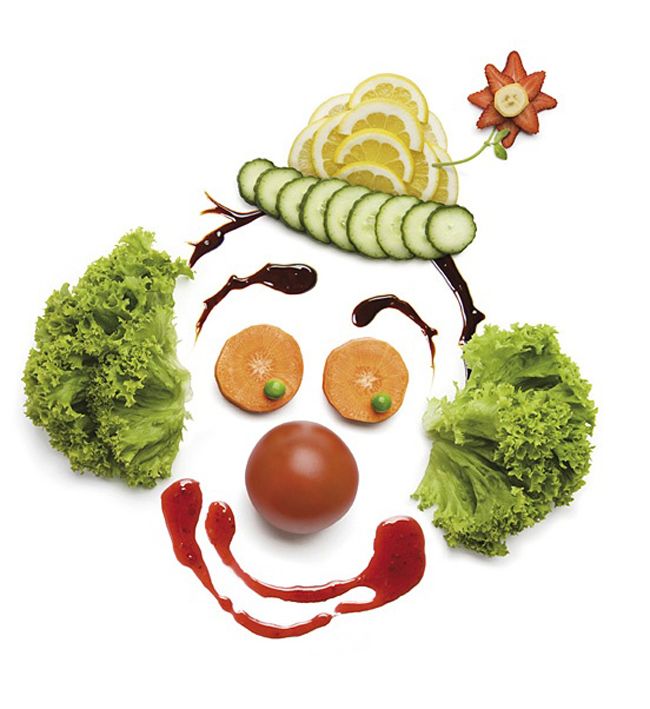 Once your baby is a bit older, grated carrots are a great option, too!
Once your baby is a bit older, grated carrots are a great option, too!
Baby-Friendly Meals With Carrots
Carrots are an easy one to serve by themselves since they can be easily grasped with a palmar grasp. But, you can also dice them into small pieces, cook them, and add them to soups and stews for babies that can chew and manipulate more complex textures.
#6 Oyster Mushrooms
Mushrooms are great because they are one of the only plant sources of vitamin D—a necessary vitamin for your baby’s growth and development. Vitamin D is crucial because it helps the body absorb calcium and aids in the formation of strong bones.
Related: Best Vitamin D Drops for Babies
Oyster mushrooms specifically are a great source of vitamin D, and they’re loaded with other good stuff that makes them a great option for your baby, too. Things like:
- Protein
- Fiber
- Copper
- Iron
- Zinc
- And other vitamins!
Safe Mushroom Preparation for Baby
Mushrooms can be tricky to prepare for the youngest babies.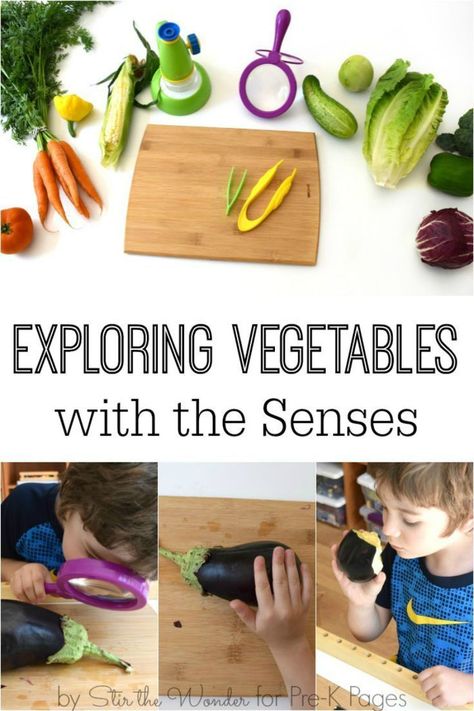 The best thing to do is take the largest mushroom caps and sauté them. Then, present them to your baby whole, so they can grip them. Once babies are a little older, they may be able to eat oyster mushrooms cut up into small pieces, whether on their own or mixed into other dishes.
The best thing to do is take the largest mushroom caps and sauté them. Then, present them to your baby whole, so they can grip them. Once babies are a little older, they may be able to eat oyster mushrooms cut up into small pieces, whether on their own or mixed into other dishes.
Baby-Friendly Meals With Mushrooms
- Cut off the stems and sauté large tops with oil and seasonings.
- When your baby is a bit older, add small, cooked pieces to foods like omelets or meatloaf.
#7 Artichokes
Artichokes may seem intimidating to prepare and serve to a baby, but they’re a wonderfully nutritious option, so it’s worth the work if you have the time! Artichokes are packed with healthy fat and some protein, contain vitamins K, C, and B, plus magnesium and several other vitamins and minerals.
Safe Artichoke Preparation for Baby
Start by steaming artichoke hearts and serving them to baby whole.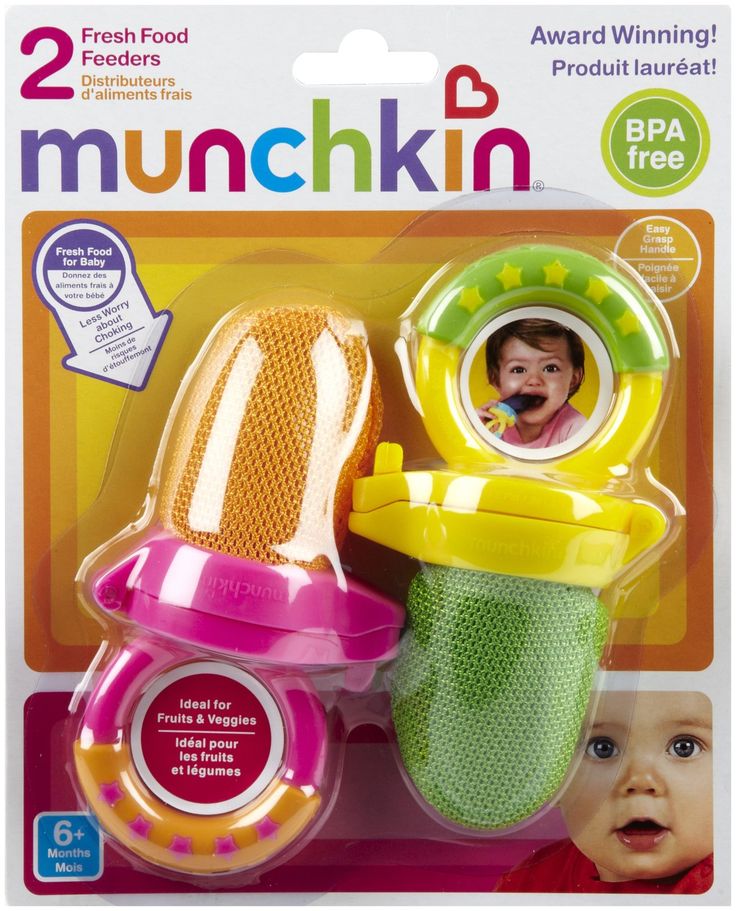 Eventually, you can move to serve them smaller pieces—but only once they’ve developed the pincer grasp.
Eventually, you can move to serve them smaller pieces—but only once they’ve developed the pincer grasp.
Baby-Friendly Meals With Artichokes
- Serve steamed artichokes whole, with a little seasoning if you feel like adding it.
- Once the pincer grip is there, offer small, cooked pieces either on their own or mixed into dishes. You know what would be delicious? A piece of lightly toasted sourdough topped with a mixture of greek yogurt, feta, and diced artichoke hearts. Yum!
- When your child is old enough, the fleshy petals of the artichoke can also be used to dip in sauces or dips.
#8 Brussels Sprouts
Brussels sprouts used to have a bad rap, but they can be pretty delicious. They’re also a nutritional superstar! They are a great source of vitamin C, vitamin K, vitamin A, and folate.
Safe Brussels Sprout Preparation for Baby
Quartered Brussels sprouts should be steamed to the point where they’re almost coming apart, then served to baby.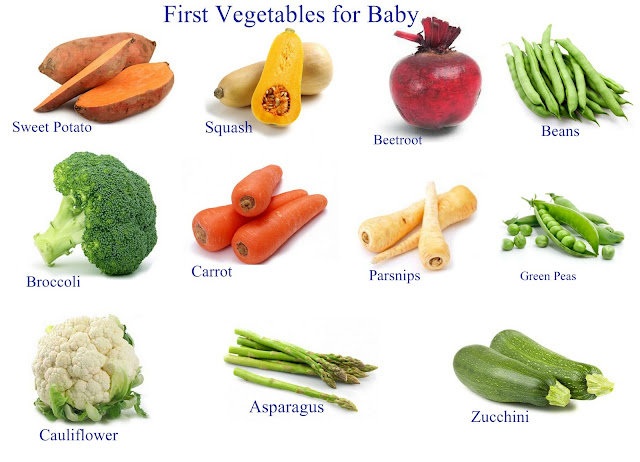 You can also buy the shredded kind, then bake or sautee them with olive oil and seasonings—but your baby may need help eating this form if they have yet to develop a pincer grasp.
You can also buy the shredded kind, then bake or sautee them with olive oil and seasonings—but your baby may need help eating this form if they have yet to develop a pincer grasp.
Baby-Friendly Meals With Artichokes
- Serve soft cooked, quartered Brussels sprouts to baby with any seasoning you choose to add.
- Add cooked, shredded Brussels sprouts to other dishes when baby is ready!
#9 Acorn Squash
There are several different squash varieties out there, and they’re all great options to serve your baby. But I love acorn squash for its easy preparation and shape. It’s got a good amount of B vitamins, some vitamin C, magnesium, and of course, carotenoids.
Safe Acorn Squash Preparation for Baby
To prepare acorn squash:
- Remove the seeds
- Cut it into wedges
- Roast in olive oil and seasonings
The wedge shape is easy for baby to grip and chew on, and the soft texture of the squash is great for new eaters. It may feel weird to give them such a big piece! But this can be a safe way to help them learn to take bites of something.
It may feel weird to give them such a big piece! But this can be a safe way to help them learn to take bites of something.
Baby-Friendly Meals With Acorn Squash
- Serve the roasted acorn squash wedges I described above.
- Mash cooked acorn squash and fortify it with yogurt or breast milk.
- Mash cooked acorn squash with cooked red lentils.
- Add cooked acorn squash to other dishes, like soups or curries.
#10 Beets
Beets are a wonderful food for babies. They have good fiber content, they’re rich in iron, and they have many important phytonutrients, including those from a class called phenols that help promote cardiovascular health.
Safe Beet Preparation for Baby
Beets can be tricky to prepare because of their shape. And, they’re known for being super messy. So try prepping them on the porch! For baby (and you), you’ll want to peel them, steam or boil them, and cut them down into safe-sized pieces baby can eat.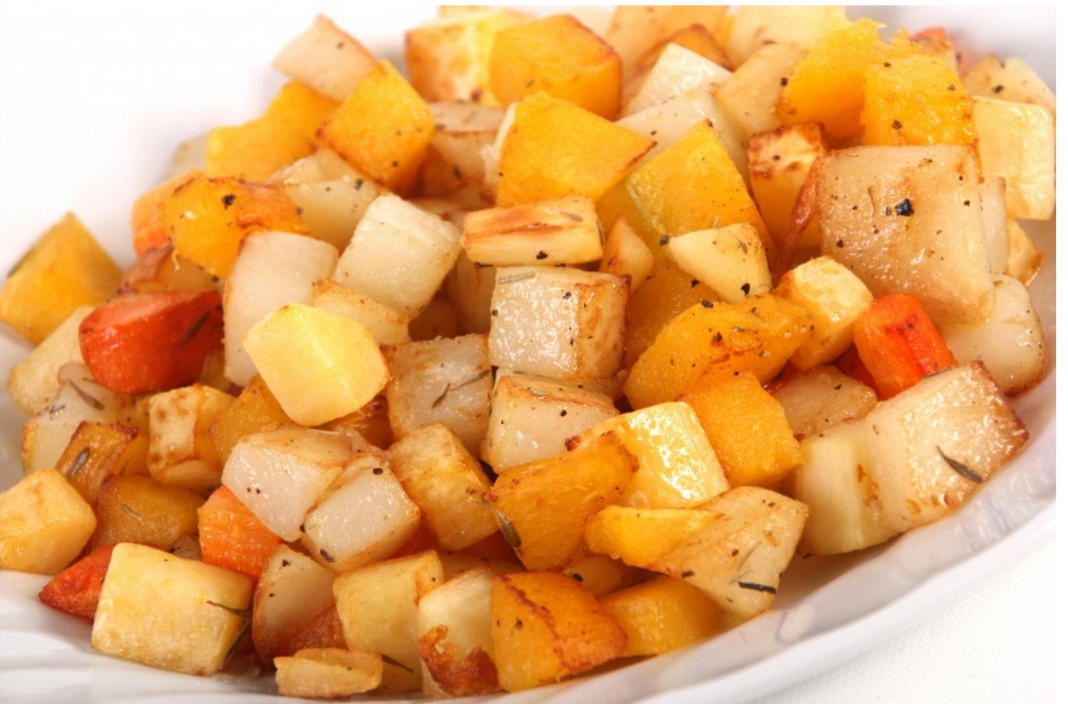 Or, start with golden beets. Not nearly as much of a mess.
Or, start with golden beets. Not nearly as much of a mess.
Baby-Friendly Meals With Beets
- Steam beets whole or buy them steamed and offer them in large pieces (large quarters or sticks) for baby to grip.
- Grate or mash cooked beets.
- Eventually, when baby has the pincer grasp, serve cooked beets in small, diced pieces.
A Final Word On Veggies for Babes
Veggies tend to be low in calories, so it’s always a good idea to bulk them up in your preparation before serving them to your baby. Adding oils, breast milk, whole milk yogurt or coconut milk yogurt as you cook and serve them are great ways to increase the fat content. We want fat intake to be unrestricted in the first two years of life, so opting for good fat sources like whole milk yogurt or olive oil is a great way to make sure baby is getting the fat they need for their central nervous system development. Also, feel free to season baby’s vegetables with herbs and spices.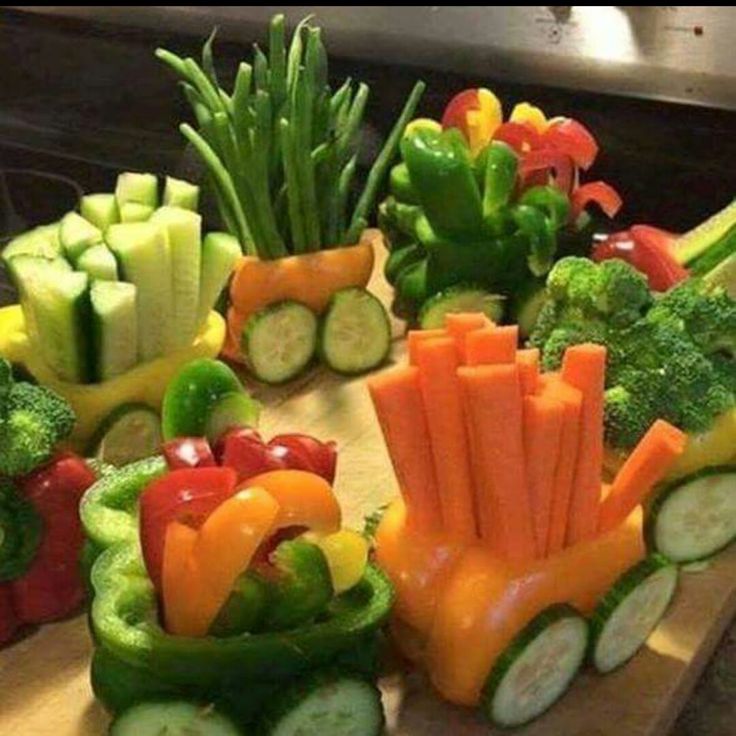 Just hold off on adding salt until after their first birthday!
Just hold off on adding salt until after their first birthday!
Don’t get discouraged if your baby doesn’t love asparagus or beets right away. Kids can sometimes be slower to learn to like veggies than fruit or other carbs. Offer them anyway, and do it consistently. The progress may feel slow (or non-existent), but trust me, every exposure you give them goes a long way in helping them get acquainted with—and stay open to—all the best veggies have to offer.
Remember: You’re offering them safe, nutritious options. And your work ends there! It’s their job to decide what and how much to put in their mouth!
Let’s Make Solids
Easier On You!Starting—and continuing—solids is hard. Especially if it’s your first time through, or you had a really tough time with your first baby, who went on to become a picky eater! My Simply Solids Guide will make this WHOLE process so much easier on you.
With the Simply Solids Quick Guide, you’ll:
- Get through the fear of the unknown world of solids
- Learn exactly how and when to start
- Understand how to handle gagging & choking
- And be ready to move past purees
Plus, the whole guide is now FREE! Don’t miss out!
Make Solids Simple
10 Best Purees for First Weaning - Ranking 2022
Introduction of complementary foods is a necessary procedure for many new parents.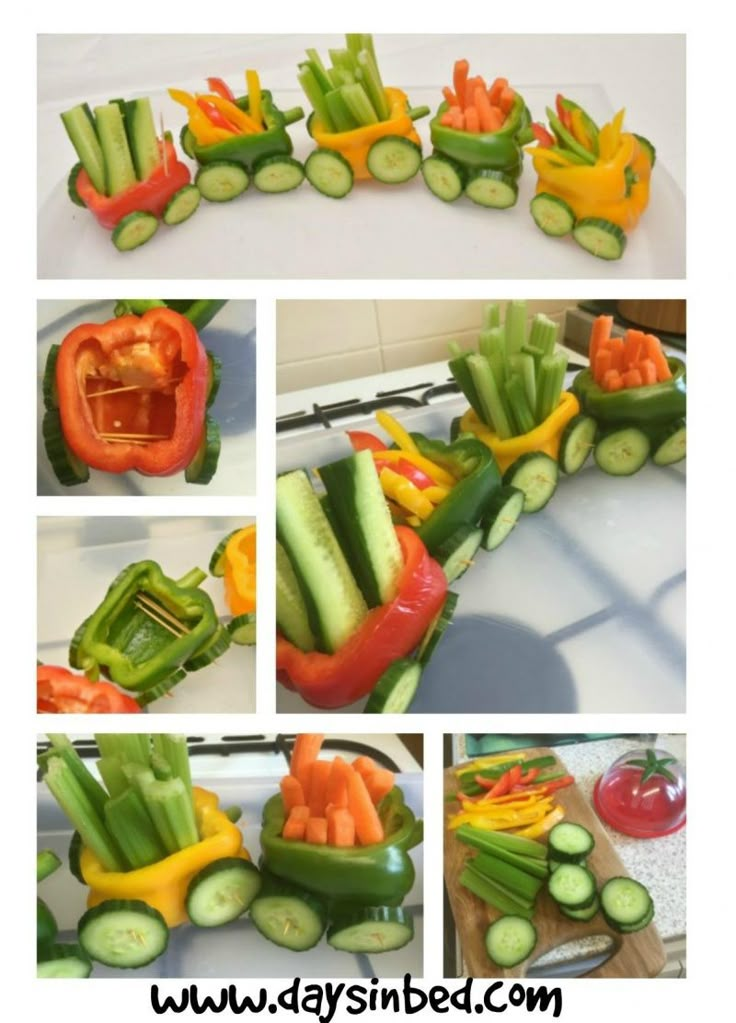 Puree from vegetables, fruits, fish or meat is introduced into the diet of crumbs at the age of 5-6 months, when the child's digestive system can already absorb the components of the puree. Before using the first complementary foods, it is imperative to consult a pediatrician. A review will also help in choosing, which presents the best purees for the first feeding, according to doctors, users and the experience of manufacturers.
Puree from vegetables, fruits, fish or meat is introduced into the diet of crumbs at the age of 5-6 months, when the child's digestive system can already absorb the components of the puree. Before using the first complementary foods, it is imperative to consult a pediatrician. A review will also help in choosing, which presents the best purees for the first feeding, according to doctors, users and the experience of manufacturers.
Contents
How to choose puree for the first feeding
The readiness of the baby for the introduction of complementary foods is signaled by a doubling of body weight from the moment of birth, as well as the ability to eat while in an upright position. Then the question arises of which purees are better to buy for the first complementary foods. Pediatricians recommend starting with vegetable purees, as they lack fructose, which has an undesirable effect on the immature pancreas and kidneys.
Doctors advise choosing products from well-known trusted brands, as they are subject to a quality control procedure. Thus, when compiling a review of puree companies for the first complementary foods, the following factors were considered by specialists:
Thus, when compiling a review of puree companies for the first complementary foods, the following factors were considered by specialists:
- Cost. The most expensive product does not mean the highest quality. The price is affected by the type of packaging, the cost of shipping raw materials - something that does not affect the content in any way;
- Composition. A quality product does not contain dyes, enhancers and preservatives, as well as spices;
- Hypoallergenic and product safety;
- Degree of fineness of components;
- Age category.
Studying the question of what kind of baby food is best for complementary foods, we analyzed the opinions and experiences of parents left on major forums and social networks. This helped determine the most purchased brands, which are most trusted.
When buying baby puree, look at the integrity of the package, the lid should not be damaged, and when opening the package, there should be a popping sound, which confirms the freshness of the product. You should also find out the appropriateness of the selected food for the age of the child. The review presents foreign and domestic companies offering top quality products.
The best domestic purees for the first feeding
You can buy vegetable puree for the first feeding from Russian manufacturers. After analyzing more than a hundred reviews, we were able to select brands that are trusted by customers.
Russian manufacturers produce food for children at the highest level at a pleasant price, due to which the products are in demand among parents. Many companies produce products from natural raw materials of their own production. 5 domestic manufacturers were selected for the rating, which proved to be leaders in the quality of baby food and popularity among mothers and fathers.
Frutonyanya
This brand is one of the most famous, most parents choose the products of the Frutonyanya company. All products undergo special testing and are recommended by the Union of Pediatricians.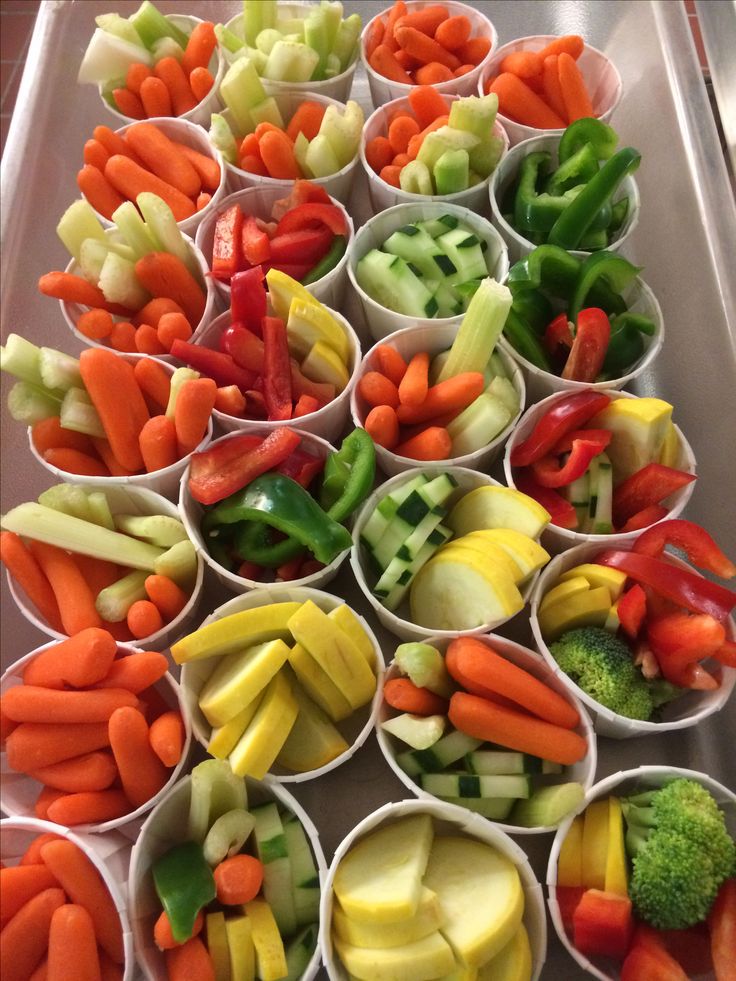 Frutonyanya produces vegetable puree for the first feeding. The tightness of the packaging is ensured by a lid and a dense polyethylene film, which allows you to protect the container from the ingress of dirt and dust.
Frutonyanya produces vegetable puree for the first feeding. The tightness of the packaging is ensured by a lid and a dense polyethylene film, which allows you to protect the container from the ingress of dirt and dust.
The company has a continuous production cycle. Fruits and vegetables from our own farms are processed, which is an indicator of the naturalness of the products. The manufacturer has released a line in doypack packaging, now you can take food for a walk.
Advantages
- Free from salt and sugar additives;
- Quality testing;
- Low cost;
- Scale with divisions in grams allows you to see the amount of puree eaten by the baby;
- Availability of hypoallergenic series.
Drawbacks
- Not identified.
Consumer reviews report a low risk of allergic reactions after use, as the product does not contain preservatives. For buyers, an important condition is the experience of the manufacturer. Products are manufactured by factories that have specialized in baby food for decades.
Products are manufactured by factories that have specialized in baby food for decades.
Grandmother's basket
The company's products are not as advertised as Frutonyanya, but still in demand among many buyers. The puree complies with strict preservation purity conditions. In the manufacturing process, technologies are used to preserve the beneficial properties of products. The puree includes only boiled and pasteurized fruits and vegetables. The composition is the main ingredient and pure water.
Choice of mashed potatoes for the first meal of zucchini, broccoli and cauliflower. The company also produces fruit products. For older children, you can buy food from cod, pink salmon and salmon. The puree has the right consistency.
Advantages
- Free of food coloring and other additives;
- Possibility to buy in soft drinking packaging;
- Environmentally friendly components;
- Uniform consistency.
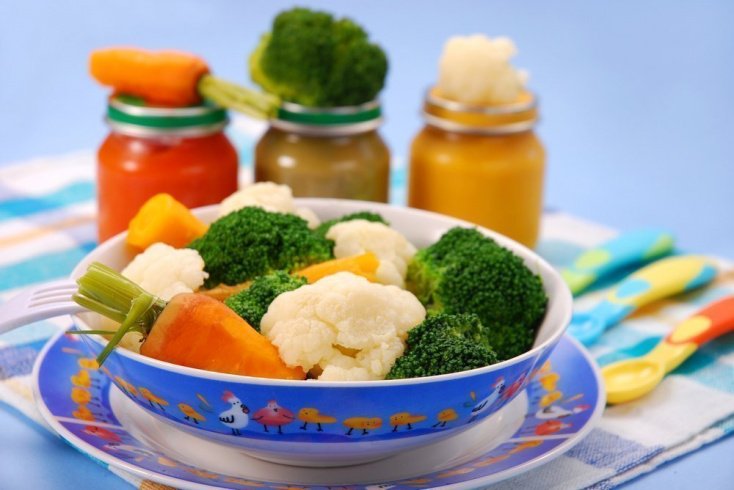
Drawbacks
- Unusual taste.
One-component purees of this brand are in special demand among buyers. They note a good consistency and the optimal amount of one serving. Not all parents like the smell of the product, but it does not interfere with children, and they eat mashed potatoes with great pleasure.
Diaper
Sady Pridonya recently launched this brand. The manufacturer produces nutritional formulas for children of different ages. The consumer can choose purees from fruits, vegetables or a combination. The product is presented in different containers - glass and cardboard.
The main ingredients are fruits and vegetables, while the crops are grown by the company. For the manufacture of products GMOs, dyes and preservatives are not used. The composition contains only natural products and water. And the quality of the indicators is controlled by the Russian Academy of Medical Sciences. The absence of expenses for the transportation of purchased raw materials allows us to reduce the cost, which cannot but attract.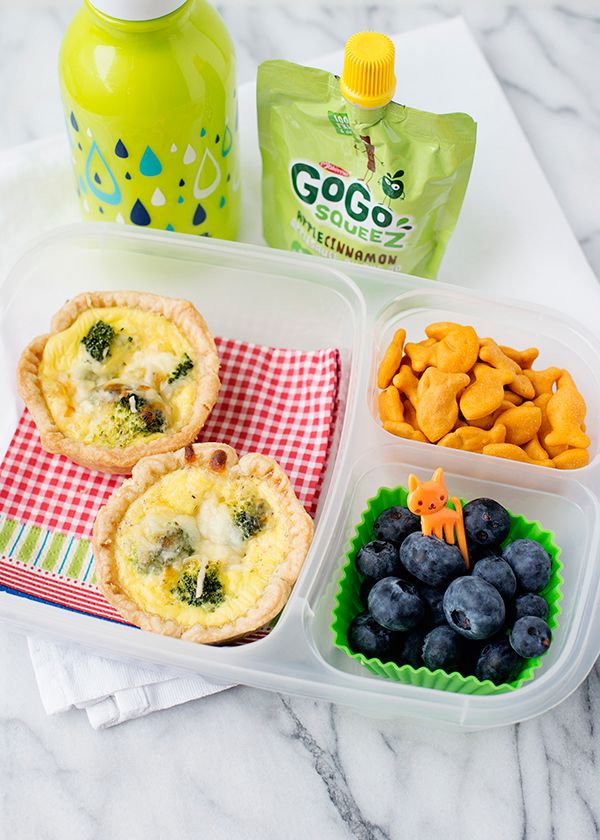
Advantages
- Large selection of purees for babies from 4 months old;
- Manufacture on high-precision equipment;
- Convenient packaging;
- Affordable rates.
Drawbacks
- Use of sugar for some types of puree.
Users are attracted by a large assortment. In addition to mashed potatoes, you can buy fruit drinks, juices and cereals. High demand for puree from several components. It can be fruits or berries with the addition of dairy products.
Topic
The Concern occupies a leading position among domestic producers of baby food. Products are made using the latest equipment. The Tema brand offers compositions with fruits, vegetables, meat, combined variations. For complementary foods, vegetable compositions of zucchini, carrots and pumpkins are suitable.
In the manufacturing process, only natural and easily digestible vegetables are used, which normalize the functioning of the digestive system.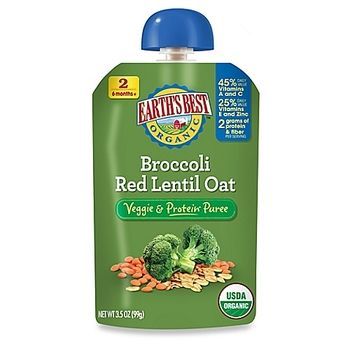 In addition to purees, the company produces juices and fermented milk products.
In addition to purees, the company produces juices and fermented milk products.
Advantages
- Affordable prices;
- High quality products;
- Huge assortment;
- Variety of packaging.
Drawbacks
- Use of a small amount of starch.
Many people like that Tema puree can be bought both in the nearest store and in the pharmacy. Also noted is the ideal consistency, the absence of unnecessary inclusions. Vegetable puree has a pleasant smell and color. Often promotions are provided on Tema puree in supermarkets.
The best foreign purees for the first feeding
A certain range of foreign manufacturers is represented on the market. Some moms and dads tend to choose them, because many companies have an excellent reputation and centuries of history. The best purees for the first feeding from foreign brands in the review are represented by five positions.
The rating of baby puree supplied to the Russian market from abroad was built primarily on the basis of pediatricians' estimates. The quality of raw materials, nutritional properties, relevance of benefits for children living in our country were taken into account.
Gerber
Products from Nestle are known for their high quality and wide range, its laboratory is one of the best in Europe. For feeding babies, mashed potatoes with one component of vegetables are suitable. The product is distinguished by a fine fraction and an environmentally friendly composition. The Gerber brand also produces food for older children. And meat purees will help make complementary foods more varied. The light texture of meat is pleasant to kids.
The manufacturer also sells multi-component products. In one puree, vegetables and milk are combined, berries are also added, enriching the child's body with organic acids, minerals, and vitamins. In addition, Gerber provides desserts made from milk with fruits.
Advantages
- 4 vegetable purees;
- Products pass approximately 250 checks;
- Convenient single serving packaging;
- Special retractable caps.
Drawbacks
- Not identified.
Users love the manufacturer's packaging. Through the glass you can see the consistency and color of the dish. Jars have lids with a special ledge, which was developed by the company's specialists. Convenient flexible packaging pouch.
Semper
The Swedish brand produces baby food for newborns and preschool children. Not only mashed potatoes, but also cereals, juices and milk mixtures are offered to choose from. Semper offers four steps of complementary foods. For children from 4 months - monocomponent formulations. For crumbs from six months - meat mixtures and assorted fruits. Fish dishes - from 7 months. And the combination of meat and vegetables in one product is suitable for children from a year and older.
The composition does not contain thickeners and dyes, but only chopped vegetables and water. From Semper you can buy food for a snack on a walk, the first complementary foods and expanding the baby's menu.
Advantages
- The first stage contains homogenized vegetables;
- European quality level;
- Testing at every stage of production;
- Improved composition.
Drawbacks
- Small portion package not included.
Consumers believe that the brand does not offer such a high price in terms of volume. Zucchini with potatoes, zucchini with potatoes and broccoli are in special demand. There are no additional components in the vegetable mixture, except for a small amount of rice flour.
HiPP
The company has a large assortment of baby food. For the first feeding from 4 months, mixtures of zucchini, cauliflower, carrots, broccoli and pumpkin are suitable.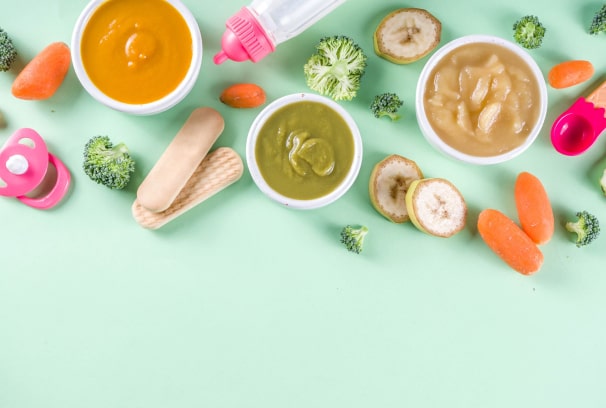 From six months you can buy a jar of turkey, beef or rabbit meat.
From six months you can buy a jar of turkey, beef or rabbit meat.
Hipp canned products are distinguished by their natural composition. Mixes include chopped vegetables, fruits, meat. There is nothing else in the product except water. The contents of the jars have a thick consistency, without lumps. Food has a pleasant taste and smell. The company uses convenient, safe packaging with a bright design that children love so much.
Advantages
- Wide range for first foods;
- High quality;
- Choice of volume - 80 and 125 gr;
- Uniform consistency.
Drawbacks
- Expensive product.
With regular consumption of the product, parents noticed that the child's stool normalizes, the intestines begin to work stably. Healthy canned food is relevant in winter, when it is difficult to purchase fresh vegetables and fruits.
Heinz
A company from the USA delivers goods to different countries of the world. In the course of work, strict control systems, innovative equipment, and the latest advances in technology are used. The applied technologies allow keeping minerals and vitamins in the composition.
In the course of work, strict control systems, innovative equipment, and the latest advances in technology are used. The applied technologies allow keeping minerals and vitamins in the composition.
Heinz offers standard first food kits. In addition to vegetables, the composition contains cornmeal. This ingredient allows you to achieve a uniform consistency. Delicious puree like most children. The company responsibly approaches the compatibility of various components in the formulations.
Advantages
- Meets stringent standards;
- Rich taste;
- Soft consistency;
- Large selection.
Drawbacks
- Not identified.
Heinz baby food is recommended by pediatricians to parents, as it contains minerals and vitamins that are important for the health of the child. Fiber stimulates the digestive system. Eating creates a feeling of satiety for a long period.
The company makes baby food with the best sugar-free ingredients. Only natural saccharides are present. The products are free of gluten, salt and flavors. The puree contains corn oil, which acts as a source of omega acids. And the use of rice flour provides a better consistency, it is also rich in amino acids and fiber.
Cauliflower, zucchini, broccoli or carrots are available as first foods. The age of the child is indicated on the package. The recipe complies with European standards regarding the nutrition of children. The products contain vitamins that are important for the full development of the crumbs.
Advantages
- Soft consistency;
- The mixture is thoroughly ground;
- Contains useful components;
- Natural pleasant taste.
Drawbacks
- Presence in the composition of rice flour.
Parents note the good taste of baby food from Bebivita. As well as the use of safe products for the composition. Positive reviews are found about the quality of the packaging and the affordable price.
As well as the use of safe products for the composition. Positive reviews are found about the quality of the packaging and the affordable price.
Which puree for the first feeding is better to buy
To find out exactly whether the baby is ready to introduce complementary foods, you need to consult with your doctor. It should not be ignored if the child refuses food and spits it out. It may be worth postponing the introduction of complementary foods 1-3 weeks later.
Before buying baby food, read the label carefully. The composition should not contain preservatives, flavor enhancers and palm oil. To restore the intestinal microflora, products with the addition of vitamins are suitable. It is important to look at the expiration date. And also choose content that is well absorbed at a certain age.
According to buyers and pediatricians, the following judgments about manufacturers can be distinguished:
- From inexpensive mashed potatoes - products of the company "Babushkino Lukoshko";
- Product for children of any age can be purchased from the manufacturer "Spelenok";
- Puree for children from 5 months is offered by the Tema company;
- Food from Gerber are suitable for those who appreciate the convenience of packaging;
- Semper puree is a premium product;
- Natural puree without additional ingredients available from Hipp;
- Heinz offers the most vitamin purees;
- Agusha and Hipp are recommended to stabilize the digestive system.

Usually, the specialist determines the period when it is possible to introduce puree for the first feeding of the child, according to the weight of the baby. Sometimes the decision is made earlier, if weight is not gained, the body suffers from a lack of vitamins and valuable nutrients.
The rating will help you choose mixtures that can replace natural feeding. And the reviews of parents and specialists will help you choose the right food for your child.
Homemade baby puree: recipes
Homemade fruit and vegetable puree: cooking secrets
Vegetable and fruit puree is often the first meal of the baby after breast milk or formula, so many mothers prefer to cook it themselves. Although modern manufacturers convince us that baby food is devoid of preservatives and harmful additives, fresh vegetables and fruits are much healthier, especially when it comes to infant nutrition. Yes, and cooking baby puree at home is not so difficult.
Vegetables or fruits?
Let's try to make baby puree for our beloved baby.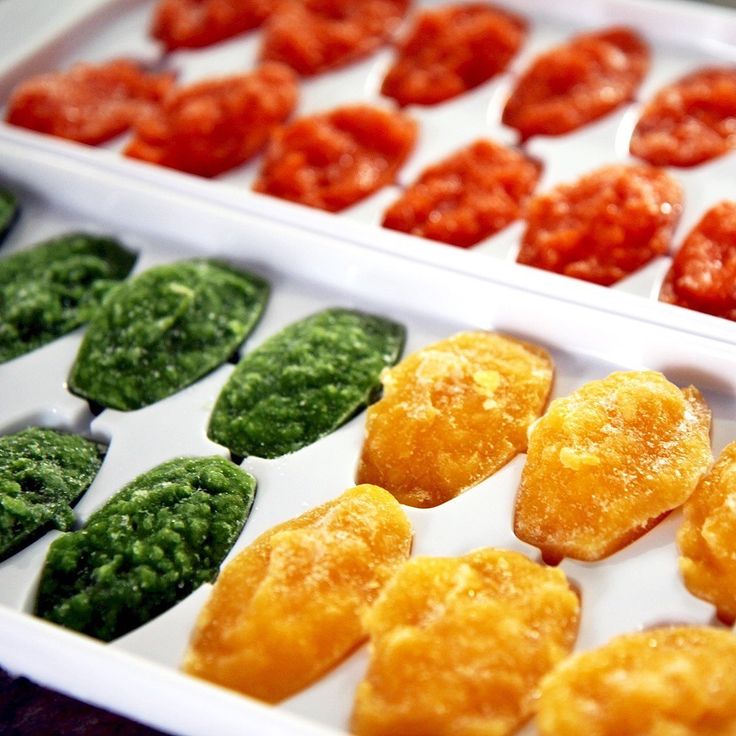 Despite the fact that pediatricians of the last century recommended starting complementary foods with fruits, it is better to first introduce the child to vegetables - modern doctors and nutritionists have come to this conclusion. Boiled vegetables do not irritate the gastrointestinal tract, are better absorbed, satisfy hunger, do not cause allergies and increased gas formation. In addition, vegetables do not contain fructose, which irritates the pancreas. And one more weighty argument in favor of the fact that it is better to start with vegetables - fruits are tastier, and if the baby tries them first, he will refuse vegetables, because they will seem to him more insipid.
Despite the fact that pediatricians of the last century recommended starting complementary foods with fruits, it is better to first introduce the child to vegetables - modern doctors and nutritionists have come to this conclusion. Boiled vegetables do not irritate the gastrointestinal tract, are better absorbed, satisfy hunger, do not cause allergies and increased gas formation. In addition, vegetables do not contain fructose, which irritates the pancreas. And one more weighty argument in favor of the fact that it is better to start with vegetables - fruits are tastier, and if the baby tries them first, he will refuse vegetables, because they will seem to him more insipid.
How to prepare baby vegetable puree
What can baby puree be made from? The ideal puree for the first feeding is from cauliflower or zucchini. A little later, you can introduce pumpkin, broccoli, carrots, potatoes and green peas. Before cooking, vegetables are washed well, peeled, cut into pieces and cooked - steamed, in the oven or in the usual way, in water. The first two methods are preferable because oven roasting and steaming preserve the vitamins, minerals, nutrients, and natural color in the vegetables. And most importantly - such vegetables are much tastier. Some nutritionists recommend boiling vegetables with their skins on before peeling them, so choose your own cooking method.
The first two methods are preferable because oven roasting and steaming preserve the vitamins, minerals, nutrients, and natural color in the vegetables. And most importantly - such vegetables are much tastier. Some nutritionists recommend boiling vegetables with their skins on before peeling them, so choose your own cooking method.
If you do have to cook vegetables in a saucepan, use an enamel pot, add less water and dip the vegetables into boiling water. Boil until soft, but do not overcook vegetables and fruits, otherwise they will become tasteless and lose a lot of vitamins. Ready vegetables are chopped with a blender until smooth and slightly diluted with water, vegetable broth, breast milk or mixture to a gruel state, since the child does not yet know how to digest thick food. Small pieces of vegetables in puree sometimes cause the baby to refuse to eat, so the knives in the blender should be well sharpened, and if there is no technique, you can grind the vegetables through a sieve. Salt and spices are usually not added to baby vegetable puree, and if the baby is more than 6 months old, you can put a little butter in the puree.
Salt and spices are usually not added to baby vegetable puree, and if the baby is more than 6 months old, you can put a little butter in the puree.
A few rules for making baby puree at home
- Use only fresh vegetables and fruits.
- Water for cooking vegetables must be filtered or bottled.
- If you are using frozen foods, choose only whole fruits and vegetables as they retain the most nutrients.
- All utensils for preparing baby food must be perfectly clean, so if the knife falls on the floor, it should be washed well. Also, the presence of pets in the kitchen during the cooking process is not allowed.
- Avoid vegetables and fruits high in nitrates such as spinach, lettuce, beetroot, melon, and watermelon in infants' diets.
- Store-bought vegetables are recommended to be soaked in water to remove nitrates: 1-2 hours for this, up to 24 hours for potatoes.
- Mix sour-tasting fruits and berries with sweet fruits - for example, blackcurrant goes well with banana or pear.
 Sour puree is unlikely to please the baby.
Sour puree is unlikely to please the baby. - Give your child only fresh food, but it is better to eat yesterday's puree from the refrigerator yourself.
DIY fruit puree for children
Children are more likely to eat fruit puree, as fruits are tastier and sweeter. Fruits contain a large amount of vitamins, minerals, trace elements, fiber and antioxidants, so they are very useful for a growing organism. However, fruits are strong allergens, especially berries, bananas, pomegranates and apricots, so they should be given with caution, watching the child's reaction. The most low-allergenic fruits are apples and pears, so it is better to start complementary foods with them, and then introduce all other fruits. First, the baby is fed with a one-component puree made from only one product, and then you can mix different vegetables and fruits, and not only among themselves. Very tasty combinations of fruits and vegetables, such as apples and zucchini, pumpkins and pears.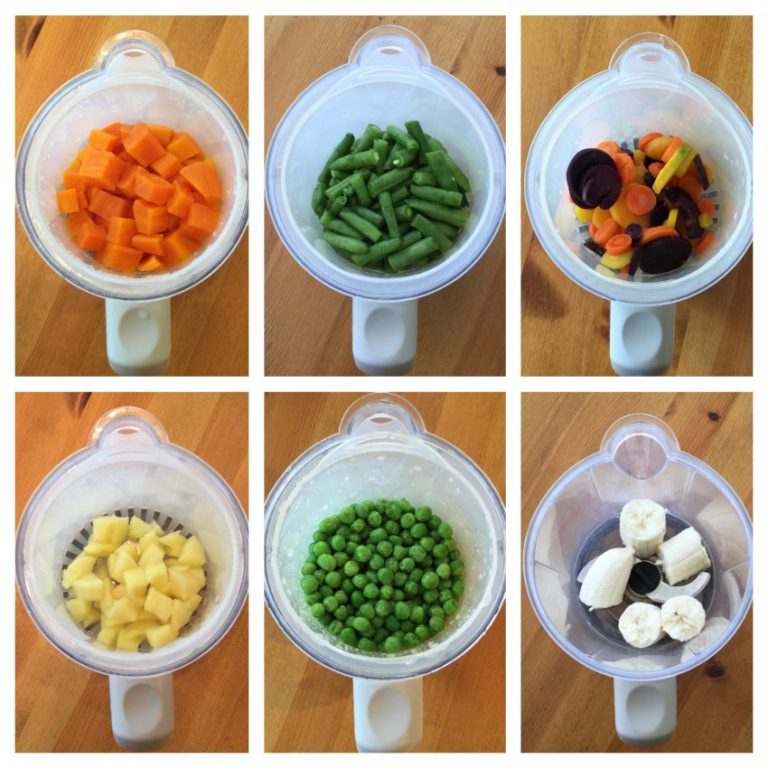
Fruit must be of good quality, without damage, ripe and juicy, and the rules for preparing fruits do not differ from the rules for cooking vegetables. Naturally, fruit puree is not sweetened with honey and sugar - the later the child learns the taste of sugar, the stronger his health will be.
Aromatic pumpkin puree
Babies enjoy eating pumpkin because of its pleasant sweetish taste, besides pumpkin is very healthy. It contains a whole storehouse of various vitamins, including vitamin T, which normalizes the metabolism in the body. For pumpkin puree, small pumpkins are suitable, since large fruits are not as tasty and difficult to peel.
Cut the pumpkin in half, and then into small pieces, one or two of which (depending on the appetite of the crumbs) cut into cubes. Boil the pumpkin in a double boiler or in water for 20 minutes, while warm, beat with a blender to a smooth puree and dilute if necessary with water or a mixture. Add oil and salt depending on the age of the child.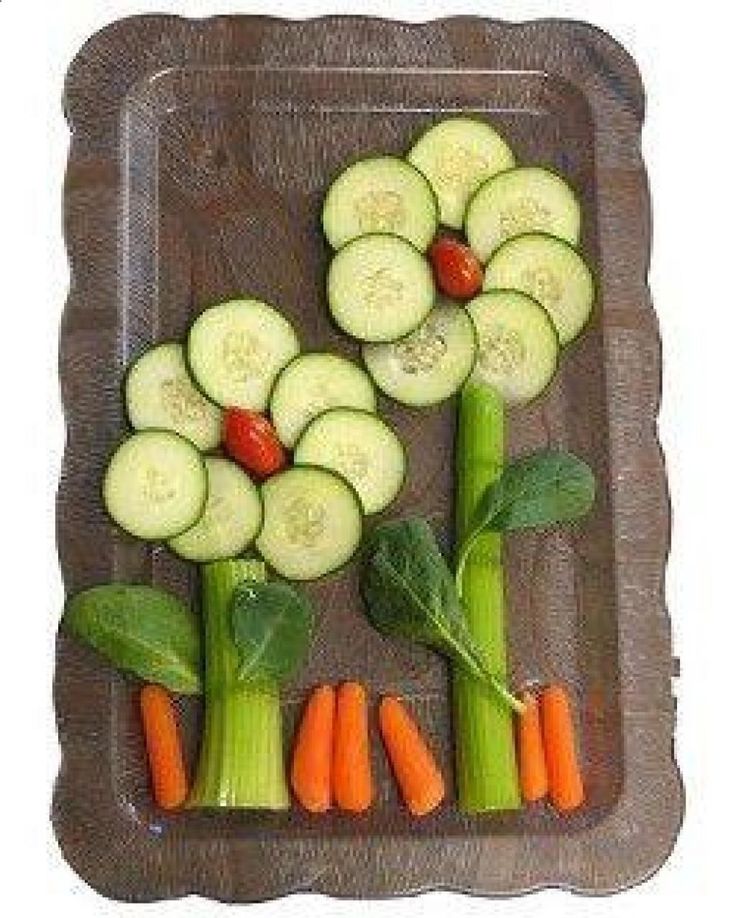
Gentle Broccoli Puree
One of my favorite homemade baby puree recipes is broccoli. This cabbage is extremely useful because it contains potassium, iron, calcium and other valuable substances. It has much more vitamin C than lemon, and the reason for its nutritional value is its high protein content.
Separate the broccoli into florets, wash thoroughly and steam for 20 minutes. Cabbage cooks faster in water - fresh broccoli will take 7 minutes, and frozen - about 15 minutes. Broccoli puree does not need much water, it should lightly coat the vegetables. After the cabbage becomes soft, chop it in a blender or pass through a sieve. If you're mashing for kids older than a year old, be sure to add butter - the little ones will gobble up broccoli on both cheeks!
How to make baby pear puree at home
Pear is a very delicate, tasty and healthy fruit that rarely causes intolerance. In addition to the high vitamin value, the pear has other beneficial properties - it facilitates digestion and removes toxins from the body.
For baby food, choose green pears to reduce the risk of allergies, which are rare among babies. Peel the fruits from the peel and core with seeds, and then stew the pear in a bowl with a thick bottom in a small amount of water for 15 minutes. Let the pear cool slightly and puree it in a blender with a little of the remaining pear broth. For large kids, fruits can not be boiled, but add half a teaspoon of natural honey to the puree.
Zucchini and apple puree
Little gourmets will love this delicious puree, besides, zucchini is considered the most hypoallergenic vegetables, which, due to their high potassium content, have a beneficial effect on the heart. Apples contain iodine, iron and phosphorus, and due to the high concentration of vitamin C, apples help in the prevention of colds and viral infections.
Wash the zucchini and apples well, de-seed them, cut into pieces and cook in a pot for about 20 minutes, considering that the zucchini will cook 5 minutes faster.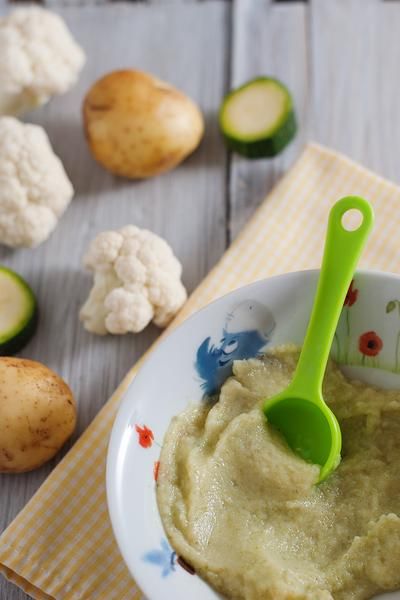 By the way, apples are steamed for 15 minutes, zucchini - 10 minutes. Next, vegetables and fruits are chopped in a blender, mixed and brought to a boil. For allergic children, this is the best side dish!
By the way, apples are steamed for 15 minutes, zucchini - 10 minutes. Next, vegetables and fruits are chopped in a blender, mixed and brought to a boil. For allergic children, this is the best side dish!
Exotic mango
Sometimes you can pamper your baby with exotic fruits - for example, make mango puree. This is a very delicate fruit with an original taste, containing 12 amino acids and improving sleep.
Choose only ripe fruits that are soft and red-yellow in color. Peel the mango from a thick skin and a large bone, put the pulp in a blender, add 2 tbsp. l. water and mash it, and then heat it in a saucepan for several minutes. For a baby up to a year old, it is better to give mashed potatoes with heat treatment to facilitate digestion, and older children can be fed raw mangoes.
Carrot-potato purée
Make normal potato purée without oil. Peel the carrots, grate them and stew them with butter and vegetable broth - about 1 tsp is required for 200 g of carrots. butter and 150 g of broth. When the carrot becomes very soft, wipe it through a sieve, and then put it on a plate, put mashed potatoes on the second half. Let the child choose whether to mix two types of puree for him or eat separately!
butter and 150 g of broth. When the carrot becomes very soft, wipe it through a sieve, and then put it on a plate, put mashed potatoes on the second half. Let the child choose whether to mix two types of puree for him or eat separately!
Pumpkin and apple puree
This sugar-free sweet pumpkin-apple puree made in a double boiler is suitable for children who are already accustomed to "adult" food and are able to perceive a new unusual dish. It is better to take a pumpkin with a gray or green skin and with bright pulp - such fruits contain more vitamins and other useful substances. Apples are green because they have fewer allergens.
Cut pumpkin and apple flesh without peel and seeds into pieces, place in a double boiler and cook for 20 minutes. Grind pumpkin, apples and raisins in a blender or by hand with a pusher if the child has already learned to chew. They say that this puree is very good for skin and hair, and you can check the truth of this statement yourself if you start feeding this dish to your baby.





